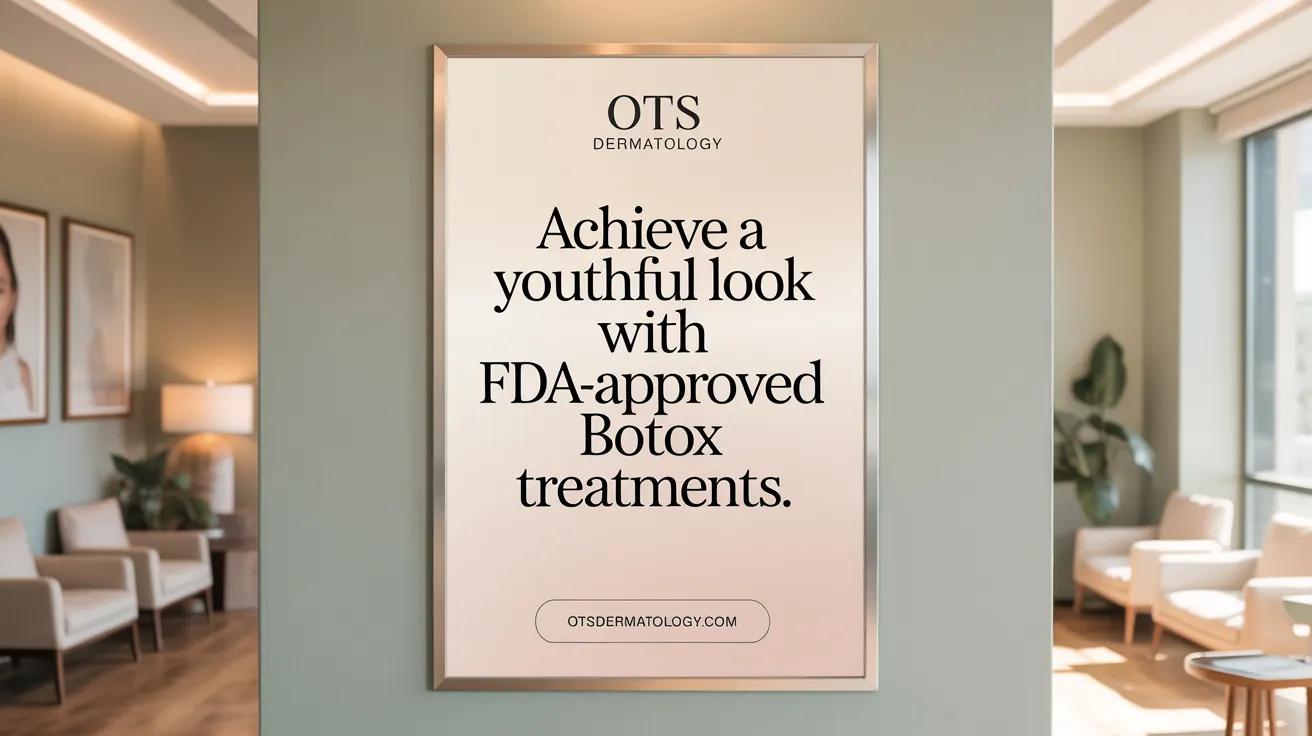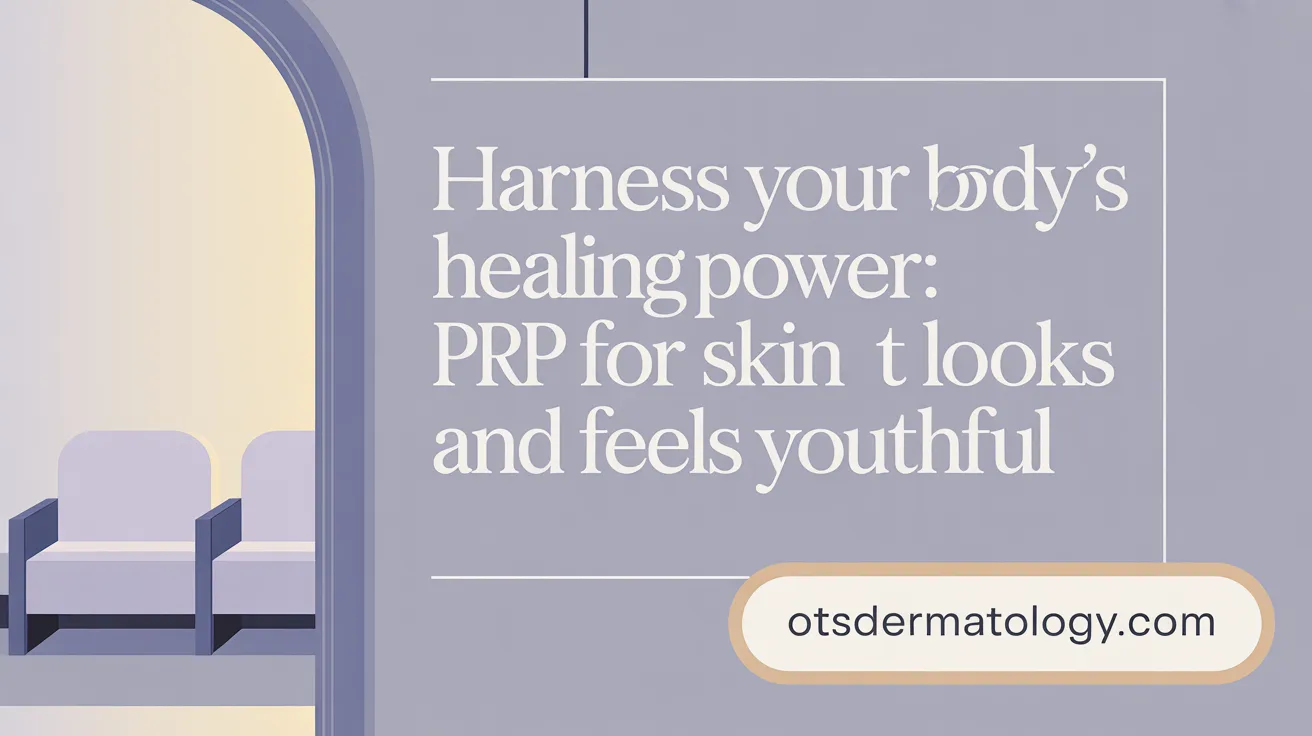Revitalize Your Appearance with Modern Cosmetic Dermatology
Cosmetic dermatology offers a variety of innovative treatments designed to enhance your natural beauty and combat the signs of aging. From minimally invasive injectables like Botox to regenerative therapies such as platelet-rich plasma (PRP), these procedures provide effective solutions for improving skin texture, reducing wrinkles, and restoring youthful vitality. Understanding the distinct benefits of each treatment can help you make an informed decision to revamp your look with safe, science-backed methods.
Key Facts List: Botox and PRP Therapy for Skin Rejuvenation
- Botox works by blocking nerve signals that cause muscle contractions, leading to reduction of dynamic wrinkles.
- Botox is mainly applied to areas such as forehead lines, frown lines, crow’s feet, and neck bands.
- Backed by over 20 years of research, Botox is FDA-approved with rare serious side effects when administered by trained professionals.
- The Botox procedure is quick, taking 10-15 minutes with minimal discomfort and no downtime.
- Results from Botox appear within 24-48 hours, with full effects in 7-30 days, lasting 3-6 months.
- Most patients report high satisfaction with Botox, appreciating the natural-looking results without facial stiffness.
- Preventive Botox can delay formation of deep wrinkles by maintaining continued muscle relaxation over time.
- Common side effects of Botox include temporary redness, swelling, bruising, and rare reactions like headaches.
- PRP therapy involves drawing blood, centrifuging, and applying platelet-rich plasma to stimulate skin healing and collagen production.
- PRP promotes long-term skin health by regenerating cells and collagen remodeling, with results gradually improving over weeks.
1. Botox: The Gold Standard for Dynamic Wrinkle Reduction

How Does Botox Work?
Botox functions by blocking nerve signals that trigger muscle contractions. Specifically, it inhibits the release of acetylcholine at the neuromuscular junction, which temporarily relaxes the treated muscles. This relaxation reduces the appearance of dynamic wrinkles—those caused by repeated facial movements such as frowning or squinting. Learn more about Botulinum toxin type A and Botox.
Which Areas Can Botox Treat?
Botox is most commonly applied to areas with dynamic wrinkles including:
- Forehead lines
- Frown lines between the eyebrows (glabellar lines)
- Crow’s feet around the eyes
- Vertical bands on the neck
- Bunny lines on the nose
- Gummy smile and chin lines
Discover the facial areas treated with Botox.
Is Botox Safe and Effective?
Backed by over 20 years of extensive research and more than 574 peer-reviewed studies, Botox is FDA-approved and recognized for its safety and efficacy. When administered by trained professionals, serious side effects are rare. The product’s unique manufacturing process ensures consistent potency and reliable results. Find out more about Botox Cosmetic FDA approval and safety.
What Is the Procedure Like?
Botox treatments are quick, typically completed within 10 to 15 minutes. The procedure involves precise injections using ultra-fine needles into targeted facial muscles. Minimal discomfort is reported by most patients, and there is little to no downtime. Patients can usually resume normal activities immediately following treatment. Read about the quick Botox treatment process.
When Will You See Results and How Long Do They Last?
Initial results tend to appear within 24 to 48 hours, with full effects becoming visible within 7 to 30 days post-injection. The wrinkle-smoothing benefits commonly last around 3 to 6 months. Regular maintenance treatments are required to sustain results. See details on visible Botox results timeline.
How Satisfied Are Patients?
Clinical trials and patient surveys show a majority of individuals report high satisfaction rates with Botox, appreciating the natural-looking results that enhance youthful facial expressions without freezing or stiffening their face. Learn about clinical trials on Botox satisfaction.
Can Botox Be Used Preventively?
Many patients choose Botox earlier to prevent the formation of deep wrinkles by maintaining muscle relaxation over time. This preventive approach helps in preserving youthful skin and delaying the onset of prominent lines. Explore the concept of preventive Botox for youthful appearance.
What Are the Potential Side Effects and Precautions?
Common side effects include temporary redness, swelling, bruising, and mild discomfort at the injection sites. Occasionally, patients may experience headaches or mild flu-like symptoms. Botox is contraindicated in those with neuromuscular disorders like myasthenia gravis, allergies to any component, pregnancy, or infections near the injection site. Proper consultation with experienced dermatologists ensures safe administration. Read about Botox safety profile and contraindications.
Botox remains a cornerstone treatment in cosmetic dermatology, offering a rapid, effective, and minimally invasive way to diminish dynamic wrinkles and refresh overall facial appearance. For more on Botox Cosmetic treatments.
2. PRP Therapy: Harnessing Your Body’s Healing Power for Skin Rejuvenation

What Are the Steps Involved in a PRP Facial Procedure?
PRP therapy begins with drawing a small amount of the patient's blood. This blood is then processed in a centrifuge to separate the platelet-rich plasma from other blood components. The extracted plasma, rich in concentrated growth factors, is applied to the skin using microneedling techniques. The microneedling creates tiny channels that help the plasma absorb deeply into the skin, amplifying its rejuvenating effects.
How Does PRP Stimulate Collagen Production?
Platelet-rich plasma contains a high concentration of growth factors and cytokines that activate the skin's natural healing pathways. These growth factors stimulate fibroblasts, the cells responsible for producing collagen and elastin. By promoting collagen synthesis, PRP enhances skin elasticity, firmness, and repair, resulting in smoother and healthier skin.
What Are the Benefits of PRP for Skin Texture and Elasticity?
PRP facials can significantly improve skin tone, texture, and elasticity. Benefits include:
- Reduction of fine lines and wrinkles
- Diminished appearance of acne scars and sun damage
- Smaller pores and more even skin tone
- Firmer, more youthful skin
- Improved hydration and natural radiance
Because PRP uses the patient's own blood, it offers a natural and organic approach to skin rejuvenation without introducing foreign substances.
Who Is Suitable for PRP Therapy and What Are the Contraindications?
PRP is ideal for individuals seeking non-invasive, natural skin rejuvenation. It effectively addresses concerns such as early signs of aging, fine lines, acne scars, and sun damage. However, it is not recommended for those with:
- Blood-related disorders, including certain cancers
- HIV/AIDS or hepatitis C
- Skin cancer in the treatment area
- Cardiovascular conditions requiring blood thinners
Patients should undergo consultation to ensure safety before treatment, as outlined in PRP safety and contraindications.
Can PRP Be Combined with Other Cosmetic Treatments?
Yes, PRP can be safely combined with other cosmetic procedures like microneedling, dermal fillers, laser therapy, and Botox. Combining treatments can enhance overall skin rejuvenation by addressing multiple concerns simultaneously and optimizing collagen stimulation and tissue repair.
What Are the Downtime and Results Expectation After PRP?
PRP therapy is minimally invasive, typically requiring about an hour per session. Patients might experience mild redness or swelling immediately after treatment, which usually subsides within a day. There is minimal downtime, allowing most to resume daily activities quickly. Visible improvements often appear gradually over several weeks as collagen production increases, as detailed in PRP treatment recovery.
How Does PRP Impact Long-Term Skin Health?
Beyond immediate cosmetic benefits, PRP promotes long-term skin health by encouraging natural regeneration processes. It stimulates cellular proliferation and collagen remodeling, essential for maintaining skin structure and elasticity as we age. With recommended maintenance treatments every 4 to 6 weeks, PRP can provide lasting improvements in skin quality and youthfulness, according to PRP therapy overview.
Overall, PRP therapy offers a natural, safe, and effective route to achieve rejuvenated skin with minimal risk and downtime, harnessing the body’s own healing power for enhanced beauty and confidence.
Embrace a Youthful Glow with Expert Cosmetic Dermatology
Whether you choose the precise wrinkle-relaxing effects of Botox or the natural regenerative benefits of PRP therapy, cosmetic dermatology offers tailored treatments to revitalize your appearance safely with minimal downtime. These advanced procedures not only improve skin texture and reduce signs of aging but also enhance self-confidence with natural-looking results. Consulting with a qualified dermatologist ensures you receive personalized care to maintain healthy, vibrant skin well into the future.
